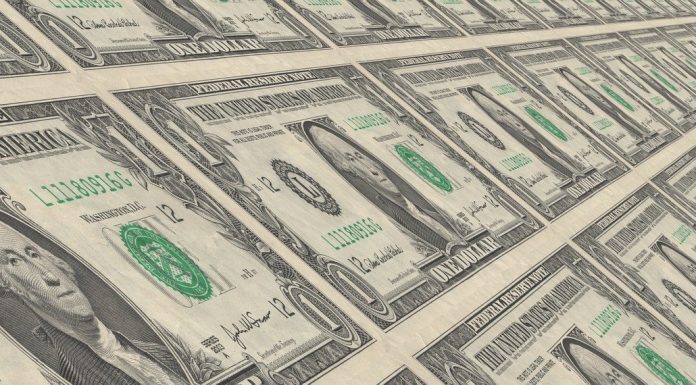(Mike Gleason, Money Metals News Service) Debt troubles in China and Washington, D.C. helped boost safe-haven demand for precious metals early this week.
By Thursday, however, investors piled back into stocks and sold safe-havens again.
As of this Friday recording, the gold price is essentially unchanged on the week to trade at $1,758 an ounce. The silver market shows a very slight weekly gain of 0.2% to bring spot prices to $22.53 per ounce.
Turning to platinum, the catalytic metal is on the move in early fall trading after underperforming all summer. Prices are up 3.8% this week to trade at $989 an ounce.
Platinum is making news for an unusual reason that has nothing to do with its primary demand sources in the automotive and jewelry industries. Instead, it has to do with the political fight over raising the debt ceiling.
Some Democrats are proposing that the Treasury Department issue a $1 trillion platinum coin as a way around the need to increase borrowing capacity.
Legal loopholes apparently allow for platinum coins in particular to be issued with any face value the Treasury Secretary sees fit to designate. The proposed trillion-dollar coins could then be deposited at the Federal Reserve, which would credit the government’s account with the cash it needs to pay its bills.
It may seem ridiculous, but the idea was taken seriously by economists who originally floated it to the Obama administration during debt ceiling standoffs in 2013.
Even though trillion-dollar platinum coins would put precious metals back into the monetary system, they would only be used as props to facilitate massive new currency printing by the Federal Reserve.
Of course, proponents of modern monetary theory believe that the government should just be able to print whatever currency it needs to pay its bills – sidestepping the need to borrow from the bond market or sell assets to the central bank. Of course, as it currently operates, the Federal Reserve System is nothing more than a charade for direct government money creation.
The Federal Reserve’s ongoing Quantitative Easing programs are a step toward total debt monetization. And now that the Fed is the largest single buyer of government bonds, it may never be able to extricate itself from that role without triggering a massive political backlash in Washington.
On Wednesday as Jerome Powell and company left interest rates unchanged, they suggested the central bank would likely begin tapering its bond purchases soon. They may well try to gradually wean the Treasury market from its dependence on the Fed, but they won’t necessarily get very far.
The supply of government debt will only grow bigger going forward. And since spending by elected officials is constrained neither by a gold standard nor by tax revenues, the only thing that ultimately backs Treasury bonds is the power of the printing press – and its electronic equivalent.
The ability of the Fed to create currency and purchase government debt in unlimited quantities virtually ensures that the United States won’t have to formally default on its bonds.
Most of the media’s coverage of the debt ceiling showdown in Washington completely ignores the longer-term risks of continuing the status quo of expanding the debt by trillions of dollars every year.
Among the biggest of these risks is an accelerating rise in inflation. Over time, even a modest rise in price levels will cause trillions of dollars in purchasing power losses to wage earners, savers, and retirees.
But over on CNBC, they are pushing catastrophe narratives about what will happen if the government can’tincrease its credit limit.
CNBC Reporter: Goldman Sachs is calling the current debt limit showdown the riskiest in a decade. Analysts there project the Treasury Department would face a $500 billion shortfall for October and November if Congress does not raise the debt ceiling. Now, that would trigger a 40% cut in federal spending, potentially including interest payments, Social Security checks, and military pay.
Now, even just the delay in increasing the limit could be damaging as well. In the letter to Congress yesterday, six former Treasury Secretaries said, “Postponing action to raise the debt limit until too close to the deadline undermines confidence in our political system at home and abroad.” Now, it is important to note that both Democrats and Republicans agree that default would be catastrophic and that the debt ceiling should be raised. What they’re fighting over is who should actually do it.
The reality is that with Democrats controlling Congress and the Treasury Department, they could suspend the debt ceiling legislatively or work around it administratively at will. Senate Majority Leader Chuck Schumer could authorize the government to undertake additional borrowing through a procedural vote at any time.
The only reason he hasn’t is to make a political point. He wants bipartisan support for the Democrats’ spending agenda so that vulnerable incumbents on his side of the aisle look better in next year’s mid-term election.
And while Republicans are making a show of opposing the Democrats’ $3.5 trillion spending bill, the debt the government currently owes is a result of spending approved by both parties over the years.
Deficits are truly a bipartisan affair, and so is monetary policy. Since balanced budgets are out the window and no elected official would actually stand by and let the Treasury Department default if it came down to their vote, all political roads lead to inflation.
Investors would be wise to protect themselves from the risks of the government not defaulting on its bonds. Because if it doesn’t formally default all at once, then the Fed will likely have to default on the Federal Reserve Note’s value at an increasing pace.
Owning hard assets including gold, silver, and platinum will provide an important measure of protection against currency devaluation. And if inflation morphs into hyperinflation like it did in Zimbabwe and Venezuela, then you’re better off holding bullion coins at any face value instead of trillion-dollar paper…Original Source…

